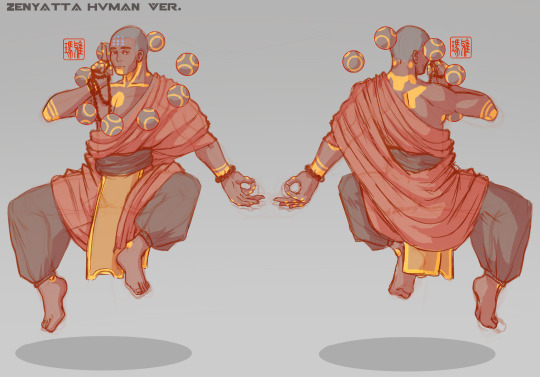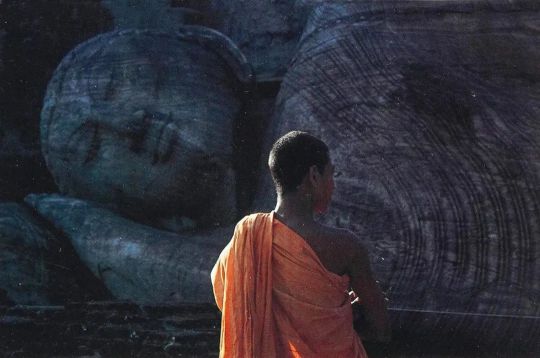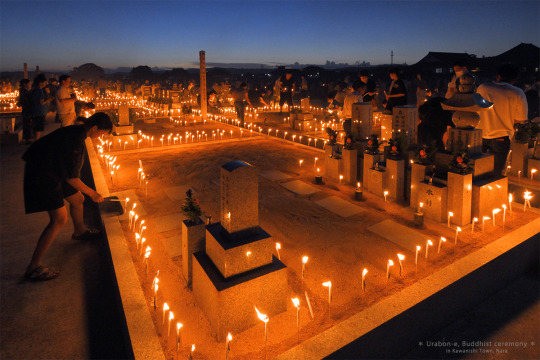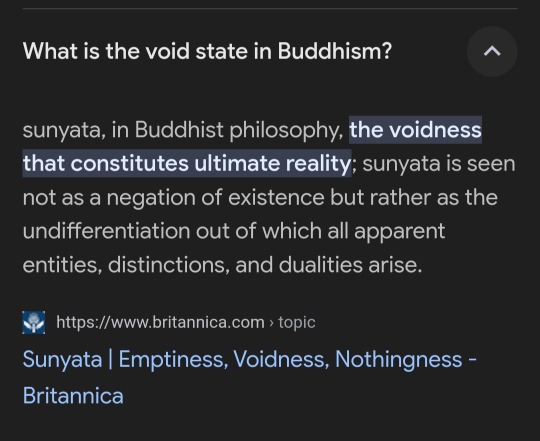#Buddhist Monk
Note
What are monks and what do they do?
are they religious leaders like priest or are they schoolers or something else?
How did someone become a monk in ancient times? Was it a boys only position? Could just anybody become a monk or did you have to do something or be something to qualify?
By monk, I assume you mean "Buddhist monks"?
Well, they are members of the Sangha, one of the "Three Jewels" (三宝) of Buddhism, which consists of the Buddha, the Dharma (Buddhist Teachings), and the Monastic Community.
(Once again, I can only talk about Mahayana Buddhist monks in imperial China. If you want more info, I recommend talking to an actual Buddhist.)
Usually, when we say "monk" (僧/和尚), we don't just mean "adherents of the Buddhist religion", since you can offer incense at a temple, copy sutras, or have a statue of Bodhisattva Guan Yin on your private altar without becoming a monk.
These are people who 1) have gone through the relevant ordination rites and swear to abide by a set of religious vows, and 2) are part of a monastic community.
In other words, they are "cloistered" (出家人), leaving their home to learn and practice their religion in a temple, as opposed to lay practitioners (在家人) who carry out their religious activities in daily life.
And no, it's not a boy-only position——there are plenty of Buddhist nuns (比丘尼/尼姑) too.
Officially, to become a monk, you need to leave your worldly life behind. Which means, if your parents are still alive, you need to get their permission, if you are a court official, you need to quit your job, and if you are married, well, you cannot remain married.
Also, living in a monastic community means you were no longer considered viable for conscripted labor or taxation, and temples owned private lands, the increase of which could, well, depriving the imperial court of available land.
(This is one main motivation for historical prosecutions of Buddhism by certain emperors: the seizing of temple property + returning the monks and nuns back into the taxable population.)
As such, the imperial court tended to keep a firm control on the number of monks and the size of the temple. Basically, you need an official permit (度牒) from the state too, given out to each temple by the officials, and the monks didn't have the authority to make you one of their own in private.
Those who have committed one of the five grave crimes——killing their father, killing their mother, killing an arhat, destroying the unity of the monastic community, and "wounding the Buddha"——cannot become a monk either.
The most visible change one must make is shaving their head, like, entirely bald.
Those above the age of 7 but under 20 can become monks-in-training, called 沙弥/沙弥尼, but not formal member of the clergy because they are still considered too young to endure the physical and mental hardships.
(Similarly, adults who seek to become a formal monk must also pass through this training stage first.)
An aspiring monk, after receiving his permit, must first find a respectable monk, answer a series of questions that assess his fitness for monastic life, pay his respect to the Buddha and the monks of the temple he's joining, then becomes the disciple of one of those monks.
One monk will shave his head and bath him, while his master clothes him in his monk robes. Then, on the next day, he will receive his ordinations inside a temple hall, in front of the entire community, where he recites the monastic percepts (read: rules a monk must follow) and agrees to abide by them.
At this point, he has become a monk-in-training, which is a prerequiste stage for formal monk ordination, 比丘戒.
Usually, the latter ceremony is carried out at an actual altar, and the candidate must have already bought the "six necessasities" of monkhood ——three sets of robes, almsbowl, sitting cushion, and water container.
In Chinese Buddhism post-Yuan dynasty, the ordination rites may also include using burning incense sticks to leave a bunch of little marks (usually 12) onto one's head.
(Source: 《中国古代僧人生活》)
29 notes
·
View notes
Text
Zenyatta - human ver. concept
by me

It’s not the final version of it (just a sketch) I’ll try to make it soon. I’ll be trying to make few concepts of his clothes yk (and sorry for the feet I can’t draw feet I hate feet)

#artists on tumblr#character art#digital art#artwork#my art#original art#overwatch#zenyatta tekhartha#zenyatta#overwatch zenyatta#concept art#ovw2#ovw#ovw fanart#overwatch fanart#overwatch 2#overwatch skins#fanart#monk#buddhist monk#character design
46 notes
·
View notes
Text
The Monkey King - Sun Wukong who first appears in Chinese stories (Journey to the West) during the Ming Dynasty period 1368 to 1644 CE, well after the introduction of Buddhism to China in about 206-220 CE.
But, was he inspired by another Monkey hero/character of myth?

The prevailing and dominant theory among Asian scholars is ...yeah, likely.
That character, Hanuman, king of the monkeys (the monkey people -Vanaras- of Vedic myth!).
The story follows a Buddhist monk who is accompanied by Sun Wukong and others to travel west to India to obtain sacred Buddhist sutras. Many of their powers and personality traits are similar as well.
We know that Vedic god such as Indra have made their way as far as Japan to take root and be worshipped because of the spread of Buddhism.
As I've talked about before and is shown in texts such as the journey's of Ibn Battuta / Ibn Fadlan, storytelling was a weapon and powerful tool for idea transfer--propagation. Philosophy was huge in the old world - and places such as Nalanda - the first residential university in the world - invited scholars from all over such as Greeks from the west, and the Japanese. Buddhism became a vehicle for trading things such as: martial arts information, medicine, sciences, and of course, myths and stories.
However, as with stories, people usually altered/coopted elements and molded them to better suit their cultures and fancy. That's a thing as old as time. I've shared how the panchatantra stories and jatka tales are thought to be the inspiration for nearly 30-50 percent of all nursery rhymes, ballads, "fairy tales".
Anyways back to this theory - Chinese Indologist Professor Liu Anwu of Peking University has dedicated chapters to the comparisons (in one of his works) to further break down this theory focusing on consistent and or similar depictions of beats in Journey to the West that of Rama's story in Ramayama and the Buddhist sutras.
Even though today the story of Sun Wukong is a wholly Chinese story - it's important to note the power of oral storytelling and how it travelled evolved over thousands of years, and, just as important, the vehicles it used to do so. Not just storytellers and philosophers and travelers but religion! Philosophy!
This is a theme heavily commented on and shown in Tales of Tremaine, which is my love letter and sort of self PhD. in comparative storytelling, mythology, and story foundry through an Asiatic lens (hence a silk road analog) stretching along a similar route the silk road did from damn near as far as you can east (complete with the oceanic routes) to as west as old venezia, portugal, and spain.
Also note: this is the most popular theory atm, but the operative word is theory. Experts likely far better than you, Internet, so chill before you comment, are still debating this. I know last week some of you were doctors in sociopolitical relations, the music industry before that, and then you were leading virologists before that. Spare us simpler folks from your mighty genius just now and sit down.
The point here is the beauty of stories and their ability to travel and morph and comment on themes/points ideologies important to cultures while being entertaining and showing that humans like certain universal moments, beats, archetypes, tropes, and progressions in tales.
Now, is that because we've naturally been predisposed liking them, or the opposite in that everyone went, yo, i dig this, took it home and someone else went, this is cool but needs to be more US (insert culture) and retold it. And thus...timemachine noises speed up. Here we are today?
You might not know that about 35,000 Chinese words ( I said this instead of Mandarin because they don't just show up in one language) are derived from Sanskrit as well as Pali (a Middle Indo-Aryan Liturgical Language -- meaning language of sacredness/religious use, in this case connected to sacred Buddhist texts). It is important to make the distinction, because, Internet!
Sanskrit did not SHAPE the Chinese languages. They evolved on their own. This is just a commentary on how words/stories shaped over travel in this case strongly through the spread of Buddhism.
Religion was the mover.
Back from quick bathroom break. Going to add again - INSPIRED is the keyword here.
INSPIRED.
Sun Wukong is his own mythos/character. Influence doesn't nor can claim dominion over everything in a later tale. Sun Wukong has gone on himself to inspire legends and characters Outside of China - re: most famously and legendary?
Son Goku - who is openly a Sun Wukong inspired character.
...hell, tbh, he might be the most famous monkey inspired super powered character now. Dude makes soccer stadiums air his fights. @_@.

#monkey king#monkey king journey to the west#hanuman#buddhist#buddhist monk#sun wukong#vedic gods#Japan#China#chinese legend#storytelling#mythology#myths and legends#asian mythology#mandarin#Sanskrit#pali#chinese language#dbz#dragon ball#dragon ball z#inspired#inspired by#the silk road#silk road retelling#philosophy#philosophers#journey to the west#fairy tales#nursery rhymes
34 notes
·
View notes
Text
"I am not my body, not my mind, not my brain" PLEASE VIEW THIS REEL AND PAY ATTENTION TO THE LYRICS!! The lyrics speak the ultimate truth!! #Nondualism #Advaita vedanta 😭😭🤍🤍
(For my mutuals, or the people I communicate with through DMs here on Tumblr, I apologize for any messages I haven't checked yet. I haven't had the time to be on my phone, but I wanted to quickly share this reel that I stumbled across on YouTube during my 10-minute phone break.)
youtube
#nondualism#non dualism#nonduality#advaita vedanta#sunyata#zen buddhist#buddhism#mahayana buddhism#void state#void motivation#zenmasters#zero point energy#buddhistmeditation#buddhist monk#buddhist#buddhawisdom#buddha#Youtube
12 notes
·
View notes
Text

Bhubaneswar, 2023
#travel#india#original photographers#photographers on tumblr#orissa#odisha#b&w photography#street portrait#b&w portrait#monochrome photography#blackandwhite#young man#buddhist monk
15 notes
·
View notes
Photo

A group of (here rather misidentified) Buddhist monks on an almsround during the late 19th century
Original rotogravure photograph produced for the western market in 1897
#historic photo#vintage photography#rotogravure photograph#rotogravure#buddhist monk#托鉢#takuhatsu#crazyfoxarchives
127 notes
·
View notes
Text

From June, 2024
#monk#buddhist monk#tourism#tourist#torre di Pisa#Pisa#leaning tower of pisa#Ricoh griii#original photography on tumblr#funny#june 2024
8 notes
·
View notes
Text

Monk in Sri Lanka by a statue of the Reclining Buddha 1988
ph. Thomas Hopker
30 notes
·
View notes
Text

Monk at Wat Munisotaram, Hampton, Minnesota, August 2017
#buddhism#buddhist monk#wat munisotaram#cambodians#khmer in america#religion#black and white#original photography#photographers on tumblr#minnesota#lumix dmc-fz20#portraits#cambodian monk#mekong.net#bruce sharp#2017#personal favorites
9 notes
·
View notes
Text

#buddhist monastery#buddhist monk#161#1312#antifa#buddhist#monk#antiauthoritarian#anti slavery#antifascist#antiwork#anti capitalism#antinazi#anti colonialism#anti cop#anti colonization#eat the rich#eat the fucking rich#class war#ausgov#politas#auspol#tasgov#taspol#australia#fuck neoliberals#neoliberal capitalism#anthony albanese#albanese government#antifaschistische aktion
2 notes
·
View notes
Text

49 notes
·
View notes
Text





【墓会式】
一度拝見したいと思っていた墓会式へ。
各家の墓地の周りに家族が灯火を立て
墓地が綺麗というのも変ですが幻想的な光景が広がっていました。
こちらの共同墓地では屋台が出て
小さな子供たちも楽しみながら
家族そろってお墓参り。
ご先祖さまも喜ばれ、良い風習だなと思いました。
川西町八ヶ郷墓地(はっかごうぼち)にて撮影
2023年8月11日
12 notes
·
View notes
Text
Thang - Street Fighter oc concept art

Here’s so more info bout my sweet boy:
He was at first named after my favorite character from JTTW story - Tang, but I changed it to sound more Vietnamese. He’s a Buddhist monk and part of Phu Quoc monastery, he’s not so physically strong so he uses halberd to fight opponents. He’s quite similar to Dhalsim- he avoids fighting and unpleasant encounters as often as possible, but if it’s about mutual respect and getting stronger together then he’s so up to it.
Maybe I’ll write about and draw him more in next posts idk
#artists on tumblr#street fighter#character art#digital art#artwork#my art#original art#oc artwork#street fighter oc#oc x canon#oc#oc art#buddhist monk#street figther 6#vietnam#concept art#wushu#martial arts
27 notes
·
View notes
Text

http://www.dharmasculpture.com/
Lord Buddha is depicted standing holding an alms bowl. Soon after Shakyamuni Buddha attained enlightenment the four great Great Guardian Kings of the four directions each presented him with an alms-bowl, the most beautiful of which was made of precious gems and the simplest from common clay. Shakyamuni was said to have either chosen the simple clay bowl or to have accepted all four bowls and miraculously convert them into one plain bowl that was sufficient for the needs of a humble mendicant.
This brass Buddha statue is mounted onto a small black wood display base and was made by the very talented artists of the beautiful Kingdom of Cambodia!
http://www.dharmasculpture.com/category/brass-buddha-statues.html
#buddha#buddhastatue#shakyamunibuddha#buddhaalmsbowl#buddhist monk#buddhism#cambodianbuddha#khmerbuddha#khmerbuddhastatues#brassbuddha#cambodianart#khmerart#buddhistart#dharmasculpture
2 notes
·
View notes
Text
Siddhartha Gautama, who lived 2500 years ago, was at a crucial point in his spiritual journey towards enlightenment. While seeking answers to deep questions under a Bodhi tree in eastern India, he gained profound insight through meditation. Determined to reach enlightenment, he embarked on intense fasting and meditation. The effects of his extreme fasting became evident on his body. One day, a passing girl offered him a rice pudding dessert. Choosing to accept the dessert, Siddhartha abandoned his harsh practices of fasting and meditation that he had been dedicated to for 49 days. It was at that moment, by letting go of these extreme methods and embracing what was already within him, that he attained enlightenment and became the Buddha.
Siddhartha Gautama succeeded, 2500 years ago, that time where electronics weren't Invented. He has Induced the void state/been literal pure consciousness A LOT of times when he didn't have any sources on electronical devices like we do now throughout his journey. He made It without technology but with his strong and dedicated knowingness. When Siddhartha gave up doing extreme methods and went with the flow of his IAMness, he achieved his ambition that was already and always within him. Respect for Buddha 🫡
Meditation for Sunyata Is extremely easy and effortless. Go within then go beyond.




34 notes
·
View notes